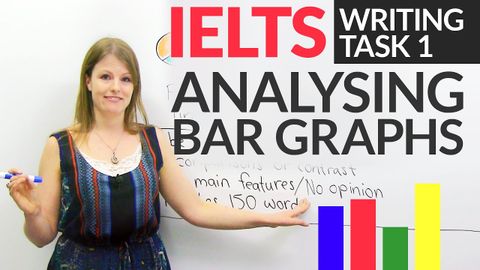【雅思寫作技巧】如何分析圓餅圖數據 IELTS Writing Task 1: How to describe BAR GRAPHS
ryan 發佈於 2017 年 03 月 25 日  沒有此條件下的單字
沒有此條件下的單字US /spɪˈsɪfɪk/
・
UK /spəˈsɪfɪk/
US /ˌrɛkəˈmɛnd/
・
UK /ˌrekə'mend/
- n. (c./u.)範本;典範;圖案;花樣;模式;方式;規律;紙樣
- v.t.仿造;用圖案裝飾
US /ˈmʌltəpəl/
・
UK /ˈmʌltɪpl/
- adj.多重的;多種的;多發性的;多重的
- n. (c.)多;多個的;乘數
- pron.多重的

